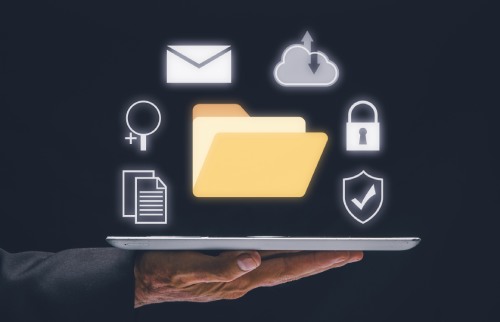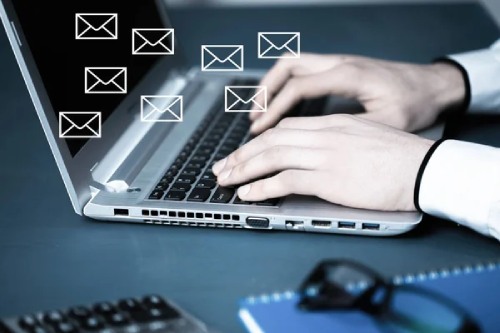DMARC Record Generator: Create Custom Records
For Enhanced Email Security
For Enhanced Email Security
A DMARC (Domain-based Message Authentication, Reporting & Conformance) record generator is a vital tool for enhancing email security. It simplifies the creation of custom DMARC records, helping organizations protect their domains from phishing and spoofing attacks. By ensuring that only authorized emails reach recipients, these generators play a key role in safeguarding brand integrity and improving overall email deliverability.
What is DMARC?
DMARC (Domain-based Message Authentication, Reporting & Conformance) is an email authentication protocol that helps prevent domain spoofing and phishing attacks. It builds on SPF and DKIM standards, allowing domain owners to set policies for handling unauthenticated emails. DMARC also provides reporting features to monitor email traffic and identify potential security issues.
Why is DMARC Important for Email Security?
DMARC plays a vital role in enhancing email security by:
- Preventing Spoofing: DMARC verifies that emails purporting to originate from your domain are genuinely sent by permitted servers.
- Increasing Trust: Emails sent from your domain can be trusted by recipients, which enhances both deliverability and your reputation.
- Providing Feedback: By utilizing DMARC reports, you can keep track of email usage and identify possible misuse.
- Blocking Phishing Attacks: It stops cybercriminals from masquerading as your brand to mislead your customers or staff.

How DMARC Record Generators Work
- Input Domain Information: A DMARC record generator requires you to input basic information such as your domain name. This step ensures the generator creates a DMARC record specifically tailored for your domain. Most generators are intuitive and user-friendly, making it easy even for those with limited technical knowledge to get started.
- Define DMARC Policy: The key element of DMARC is the policy you set, which dictates how email servers handle messages that fail SPF or DKIM checks. The three main policy options are:
- None (p=none): No action is taken, but reports are sent. This option is useful for monitoring.
- Quarantine (p=quarantine): Suspicious emails are sent to the spam/junk folder.
- Reject (p=reject): All unauthenticated emails are blocked from reaching the recipient’s inbox.
- Set Reporting Options: DMARC allows you to receive reports on emails that pass or fail authentication. In this step, you specify where to send these reports, often in the form of aggregate and forensic reports. The generator will help you create custom reporting settings, such as:
- Aggregate Reports: Summarized reports showing overall email authentication results.
- Forensic Reports: Detailed information on individual messages that fail DMARC.
Benefits of Using a DMARC Record Generator
- Simplifies Setup Process: For those who aren't technically inclined, setting up a DMARC record by hand can be quite challenging. However, using a DMARC record generator simplifies this task by automating the creation process, guaranteeing that your record is properly structured and includes all essential components.
- Customization and Flexibility: An effective generator enables you to tailor your DMARC record to suit your specific requirements, providing versatility in policy implementation and reporting features.
- Enhanced Accuracy: When manually configuring a DMARC record, there is a risk of making errors that could lead to failed email deliveries or ineffective security measures. A generator reduces the chances of mistakes, ensuring that your record is accurate and functional.
- Real-Time Monitoring: Most DMARC record generators provide built-in monitoring tools that allow you to track email authentication in real-time. This feature helps you identify and address issues quickly, improving overall email security.
A DMARC (Domain-based Message Authentication, Reporting & Conformance) record generator is a vital tool for enhancing email security. It simplifies the creation of custom DMARC records, helping organizations protect their domains from phishing and spoofing attacks. By ensuring that only authorized emails reach recipients, these generators play a key role in safeguarding brand integrity and improving overall email deliverability.

Best Practices for Creating DMARC Records
- Start with a “None” Policy: When you initially set up DMARC, it is recommended to begin with a policy of none. This strategy enables you to collect information and evaluate your email authentication environment without jeopardizing the delivery of your emails.
- Gradually Move to "Quarantine" or "Reject": After thoroughly examining your DMARC reports and ensuring that your email authentication is properly configured, you can transition to a quarantine or reject policy for a more stringent approach in blocking unauthorized emails.
- Review DMARC Reports Regularly: Keeping an eye on your DMARC reports is essential for ensuring security. By routinely examining them, you can stay updated on possible threats and modify your policies as needed.
- Ensure SPF and DKIM Are Properly Configured: DMARC depends on SPF and DKIM for its authentication process. Before enforcing a stringent DMARC policy, make sure that both SPF and DKIM are properly configured and functioning as expected. Please proceed to check out for further guidance.